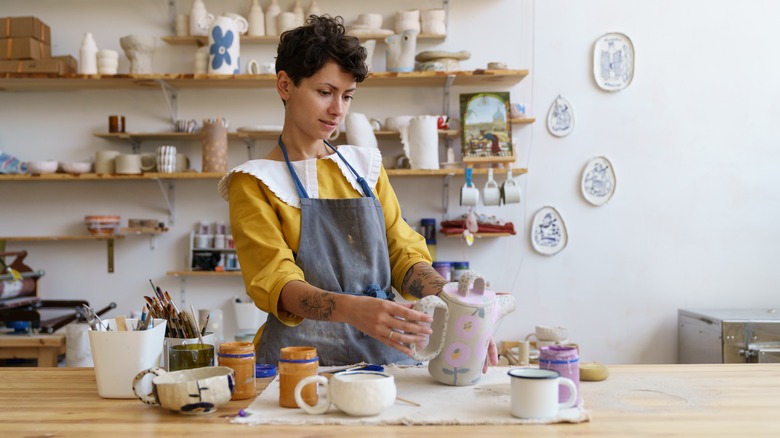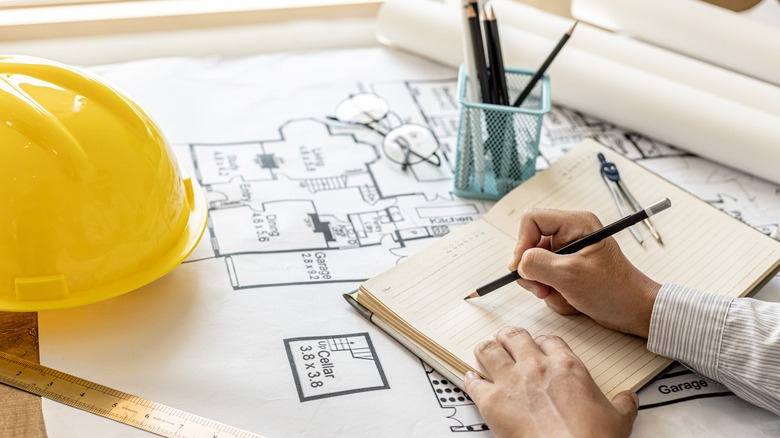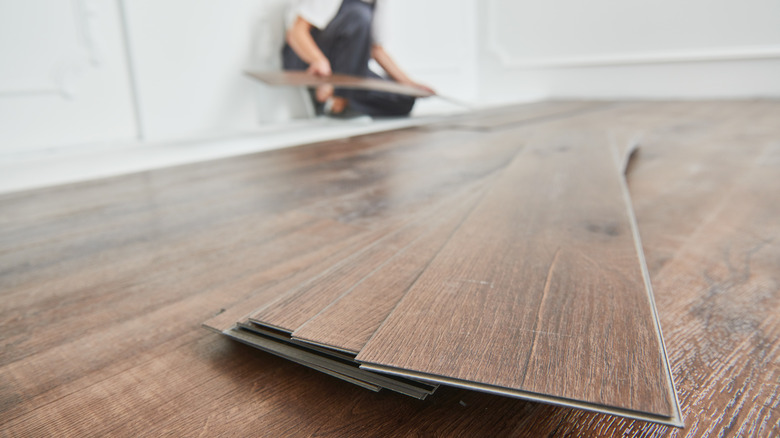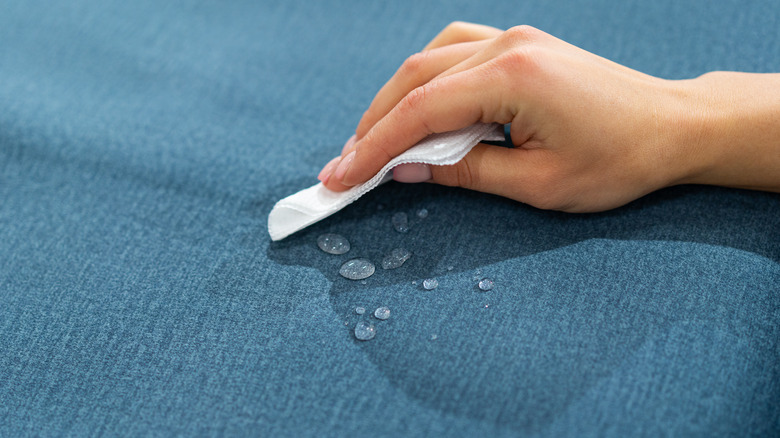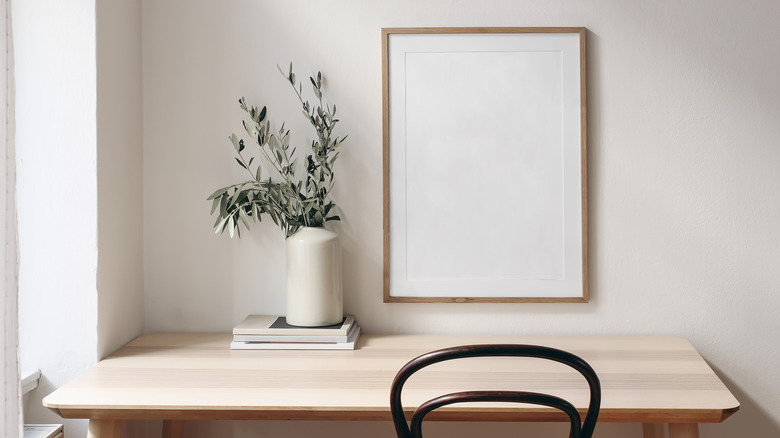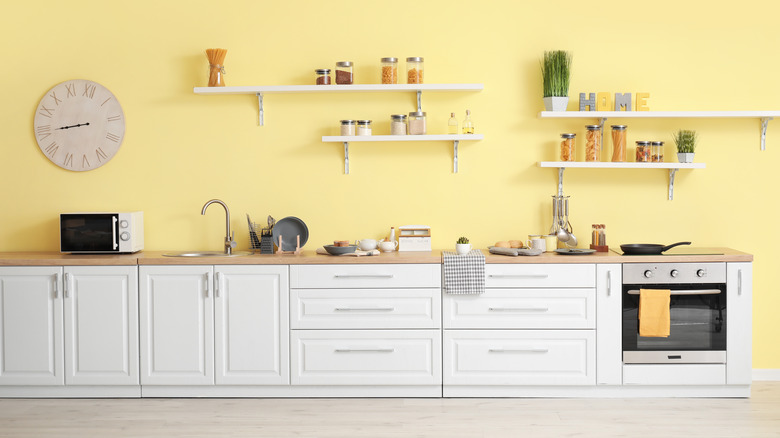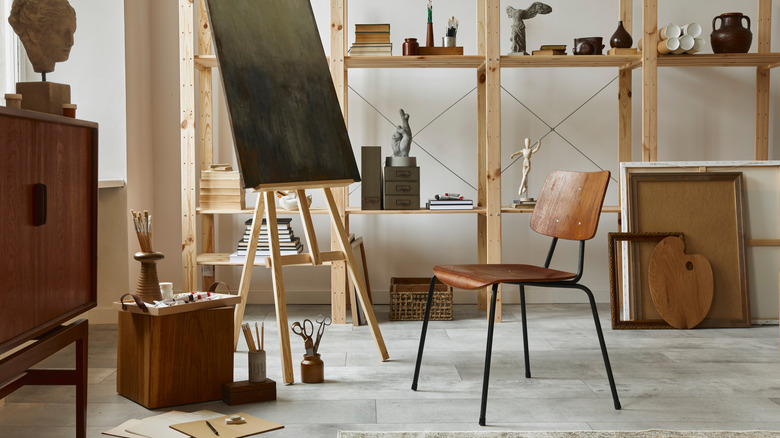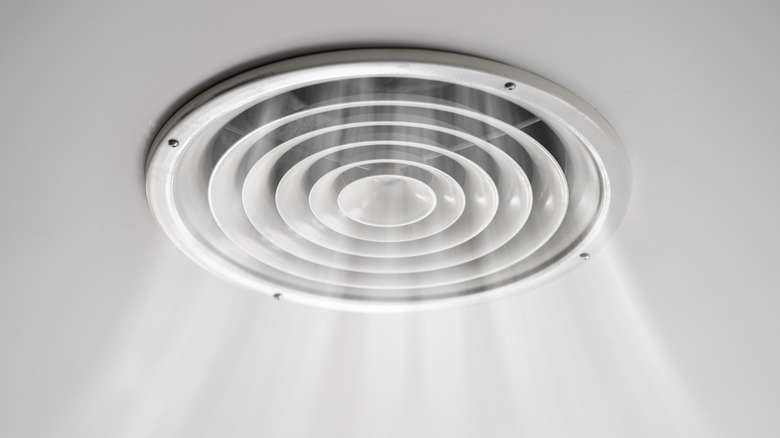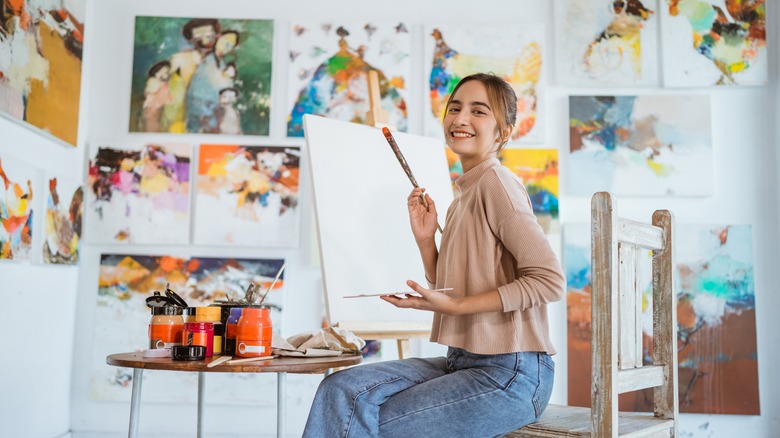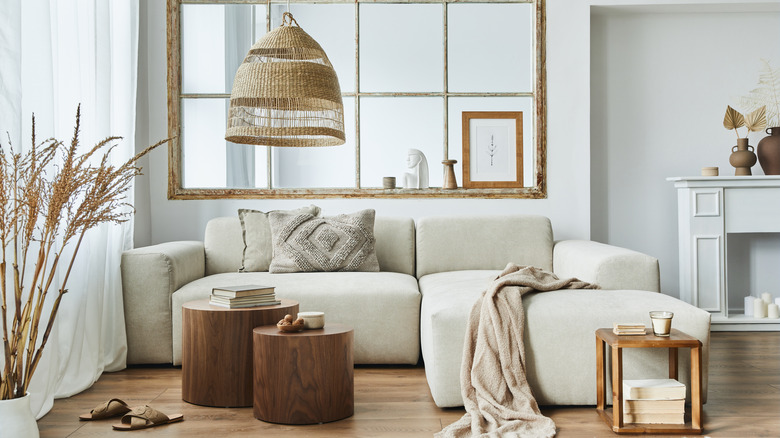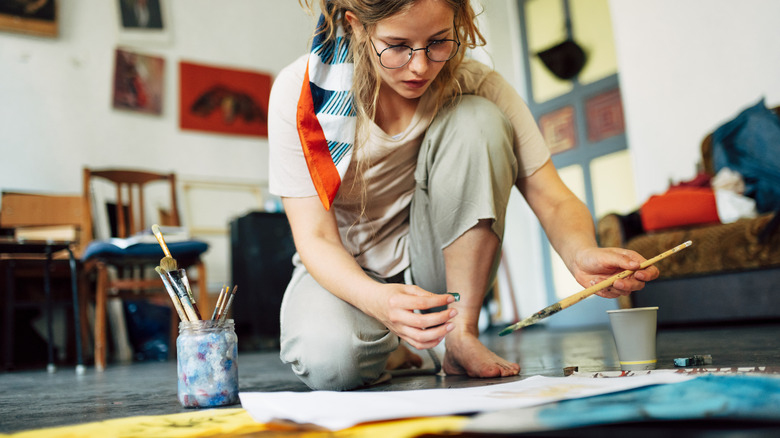How To Create A Home Art Studio
A home art studio gives your creative spirit a space to experiment, explore, and imagine. Utilizing a room in your home to dedicate to the artistic pursuits that drive your hobby is a fantastic opportunity in any home. Art is a blend of chaotic expression and controlled output, and the best products created in spaces often showcase the artist's personal taste.
Of course, it's possible to set up an easel or sketching equipment outside in the backyard or the living room, but these spaces will need to be set up and then broken down each time you want to use them. An art studio in your home provides the foundation necessary to work on your passion projects without interruptions or the time-consuming process of preparing the space. Much like a writing desk, they create an environment that breeds creativity and wonderful inspiration and artwork.
Every artist's space will be unique to their needs and creative inspiration. However, a home art studio remains a viable means of creating these conditions, regardless of the format or artistic medium, per Art with Miss H on YouTube. With these great approaches to the home art space, building a studio that fits your needs is easier than you might think.
Identify a place that suits your needs
A home art studio is a lot like a home office. This space will function as the foundation for your creativity and productivity. As such, it's crucial to select an area of the home that suits your spatial and functional needs, per Real Homes. A spare bedroom, your garage, or even a basement can be the perfect home art studio, depending on your lighting needs, space requirements, and access considerations.
A home art studio needs to inspire creativity above nearly all else. One of the ways that this area provides that is openness. A home art studio should have ample room for movement, thought, and action — especially for sculptors or painters who work with large canvasses. Unlike many jobs that a home office space can accommodate, artists need to be able to express themselves and move around the room to create vibrant and inspired pieces. For example, an office worker may only need a tidy desk space and a technological setup. The first step in creating a foundation for productive and creative artwork at home is selecting an appropriate room or addition that supports all the positivity and passion in your studio.
Prepare the floor
Flooring is the next step to creating an inspiring workspace for your home art studio. This inclusion will need to strike a balance between comfort and functionality. Carpeting, for instance, isn't suitable for most artwork-supportive spaces in the home or anywhere else. Carpeting is comfortable on the feet, of course, but it's challenging to clean up the paint, clay, or other substance from carpeting. Art can be very messy, and cleaning up after a project has finished (or at the end of a working day) can be made infinitely more difficult with an inappropriate flooring choice.
Some good options for art studio flooring include laminate flooring, hardwood floors, tile, and vinyl installation. Woodworking Clarity notes that paint is simple to remove from hardwood floors, but it's essential to know what type of paint you're working with to determine the best cleaning method. The same goes for these other hard surfaces that naturally resist staining and sticking.
Flooring installation adjustments might be necessary when setting up an art studio in your home, but the change will be well worth the effort. Not only will you gain a fresh new feature that looks and feels great, but this alteration will also make the housekeeping components of your artistic pursuits far more manageable.
Add additional flooring protection
In addition to changing the flooring to a more appropriate, hard surface that supports the workload that you'll take on in the studio, as well as the cleaning requirements of the space, it's a good idea to use drop cloths and other flooring protection equipment. Paint Like A Pro on YouTube notes that a drop cloth is an easy-to-use addition to a painting workspace and can save you a lot of time and energy on the cleanup process when the painting is complete. Simply lay one down before breaking out your paintbrush and other tools.
Installing new flooring that can handle the rigors of an active art studio is essential, but this step doesn't mean that you should leave the flooring unprotected. Laying down drop cloths or any other protective layer that fits your space and needs is an ideal additional step to keep your flooring clean, viable, and functional for longer.
Bring in tables and shelving
Table space is an essential addition to a home art space. In order to draft the images that you have floating around in your mind, you'll need a quality desk for your projects. Homesthetics suggests using a drafting table that suits your specific needs with adjustable height. Consider if you require an angled desk or one with a chair. A table for bringing your design ideas to life will serve as a central feature in your studio, so making sure that you find one that works perfectly for your space should be at the top of your priorities list.
In addition to a high-quality artistic table or drafting space, you'll want to incorporate some art supply-specific shelving additions. A painter, for instance, will want to work on an easel, but a nearby shelf or mobile table that can hold paints, additional brushes, and more will make the process of adding color and brushstrokes to the canvas that much easier.
Don't sleep on the importance of a quality chair
The chair you use for painting, writing, or planning in the art studio can make or break the workspace. Open Access Government notes that an ergonomic office chair is essential for quality physical health and mental wellbeing.
There's no denying that a poorly designed chair can take a physical toll on the body. However, the long-term mental wellness you get from a great chair (and avoiding these physical aches, pains, and injuries) often flies under the radar. Another option for maintaining good spine health and mental wellness is a standing desk. This feature might be a good idea for those who work better while standing up, offering a stable desk space that reduces or eliminates the need to splurge on a chair. If you spend time sitting down while painting, sketching, or planning out artwork, then a good chair is an absolute must for your home art studio.
Embrace vertical storage solutions
Vertical storage is a must in nearly any workspace, particularly those that naturally take up a smaller footprint. Shelving additions look great, and they offer an easy opportunity to add decorative elements to your art studio and functional storage needs that improve the versatility of your space.
Adding vertical storage is all about taking advantage of wall space to provide both aesthetic value and a greater volume of storage and equipment holding capacity. Another storage idea is to use stackable drawers to create a vertical tower of pull-out storage, per Abbey Organizes. Alternatively, you can incorporate shelving or rack storage that attaches directly to the wall for a pleasing visual effect. It provides a shelving area away from your walking path and removes some of the clutter from desks, countertops, and other essential spaces for keeping elements of your art creation workflow. If you feel like taking a plunge, consider adding open shelving to the walls of your studio.
Enhance function with lighting elements
It's essential to think about the lighting in your home studio and the furniture and equipment you use. A difference in the lighting output can impact how you visualize the colors that make it onto a canvas or piece of paper. The Virtual Instructor reports that lighting in a home art studio should be around 5000K to most accurately represent natural light that pours in from the sun.
Cool light, or warmer light for that matter, can alter your perception of the pigments, leading to a change in your understanding of the work you are creating. You might mix paints to mirror the color palette you see on flowers in the garden, a building you admire in the community, or a loved one's skin tone, only to find out that you've been working with a slightly augmented perception of the color the entire time. Get the lighting in your studio right from the beginning to avoid this potential disappointment.
Incorporate essential equipment
Art studios will never be complete without the tools of the trade in the space, according to Joan Breckwoldt. Once you've established the basic layout of your workspace, it's likely time to begin thinking about canvasses, paints and paint mixing tools, an easel, and other essential equipment.
Pottery makers will need a turning device, racks, and perhaps even a home kiln. Whatever art form you work within, you'll need to incorporate the essential tools, accessories, and pieces into your home art studio. Now is as good a time as any to think about any new installations that may be required to complete the home studio design. Consider investing in a good-quality daylight lamp. This addition will help you maintain a focused lighting element on your canvas or another medium throughout the session, even if you prefer to work late into the night for enhanced inspiration and creativity.
Consider running water needs
A painter, pottery creator, or even a sculptor may very well require the addition of running water in the studio space. A small sink can make all the difference when cleaning brushes or tools after use, and incorporating this feature in the studio will make for a much easier transition from creating to cleaning.
Instead of moving art supplies from the studio into the kitchen or bathroom — specifically by taking these potentially messy instruments through the house — you can contain the environment and all the mess in one space. Building a simple, self-contained sink addition is simple and won't require a more traditional pedestal sink top installation or an expensive visit from a plumber, per Michael Griffin on YouTube.
Water features can make the space far more versatile. Adding this installation will provide you with a virtually self-contained workspace that can function without visits to other parts of the home for supplies or services. This feature can help you instill a level of focus that might be impossible otherwise.
Remember ventilation requirements
Ventilation is an essential consideration for any working environment. However, a home art studio requires a well-cared ventilation system because the space must promote both a productive and safe environment for you — the creator — and the creations you work on each day. Paintings require a particular humidity level and temperature equilibrium to keep the canvas in good condition. Pottery can crack or shift in taking up coloration if left in a poorly ventilated space.
ECOS Paints notes that painting in any room requires a few key considerations. It's always a good idea to take breaks so that you aren't consistently breathing in potentially harmful fumes. Make use of cross ventilation with fans, windows, or a dedicated air conditioning system to help ensure that the space maintains a comfortable environment for you and a positive place for crafting beautiful artwork that will stand the test of time.
Incorporate decorations and creative flair
Decorations are a primary inclusion in any working space. The New York Times notes that decorating an office or studio space is crucial in making the area personalized and homely, but it also increases general motivation. Decorative additions allow you to make a space your own, maintain a level of control over the area itself, and command the output of your efforts in a meaningful way.
In a home art studio, you have the last word on how the space will be decorated and finalized. In office environments, there may be a limit to how many images, political statement pieces, or additional design elements you can functionally or permissibly add to a space. In your home studio, you can do anything that makes the art flow better from your mind and hand. Getting creative with the personalizations in the space is a great way to make your mark and build the most productive and creative environment possible.
Mobility is your friend
Mobility and modular designs allow for quick transformations in the layout of your workspace, according to Real Homes. Use adaptable storage solutions to quickly alter the overall footprint of your studio workspace if the need ever arises. Artists, like any other home office space user, should incorporate functional elements into their working environment. Storage, electronics and connectivity equipment, and supplies make their presence known in these areas. A home art studio should provide a workspace for painting, sketching, or sculpting while creating room for the business end of the process.
Artists typically want to share or sell their work once it's complete. Shifting gears from creator to content sharer can be complex without the ability to move desks, filing cabinets, or shelves around. Mobile desk additions and modular storage are a great addition to home art studios because they can quickly adapt to whatever the need of the moment demands.
Shop local where possible
Shopping online provides great convenience for consumers. However, when selecting equipment, decorations, and furniture for your workspace, it's often best to shop in person so that you can touch and explore the pieces you have your eye on for a better understanding of their potential fit in your studio space.
Independent We Stand notes that shopping local allows you to pour money into your local economy rather than spending with a remote brand. Plus, you can shape the originality and specifics of your layout with better control. Using local outlets for your goods and decorative elements makes for a more robust and thriving community presence that gives back in more ways than one.
As well as a financial boost in your area, shopping local allows you to experience a more personalized shopping environment. Local outlets employ local people. Every trip to a storefront near your home is a chance to interact with individuals experiencing life the same way you are. Similarly, shops that cater to local consumers are more likely to provide personal service and carry items that best suit the needs of the community environment, making your art studio a better-customized space for your needs and location (via Rubicon).
Create a unique atmosphere
A positive work environment requires a sense of separation from the rest of the home. An office, art studio, or any other type of productive space used for essential functions or as a jumping-off point for hobbyists should be for the sole purpose of these tasks. For example, a home office that doubles as a relaxation space isn't one where you'll be prone to maintain a high level of performance throughout each day and month on the job.
Android Authority notes that relaxation and productivity often oppose one another, so creating a functional gap between the workspace and your living room or bedroom is a must. Incorporating specific lighting that works best for an art studio yet might not facilitate relaxation in other parts of the home is a great place to begin. Take breaks outside the dedicated studio space instead of remaining in the room and browsing through your phone, for example.
Placing the studio in a corner room in the home or even in a prefabricated structure in the backyard can facilitate a physical barrier between downtime and hours that you intend to dedicate to your craft. Similarly, the decorations you install should promote the highest focus and productivity.
